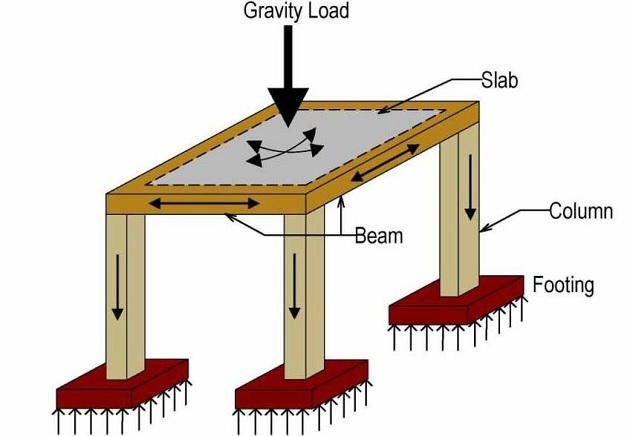What is a box culvert and where is it used?

A box culvert is a type of structure used in civil engineering and transportation infrastructure to convey water, typically beneath roads, railways, or other embankments. It consists of a rectangular or square-shaped concrete or reinforced concrete box with open ends, designed to channel water through an enclosed passage.
Key features of box culverts include:
Rectangular or Square Shape:
Box culverts are characterized by their rectangular or square cross-sectional shape, providing a wide and enclosed passage for water flow. The dimensions of the box culvert can vary depending on the hydraulic requirements and the size of the watercourse it is designed to convey.
Concrete Construction:
Box culverts are typically constructed using concrete or reinforced concrete materials, offering strength, durability, and resistance to hydraulic forces. The walls, base, and top slab of the culvert are all made of concrete, providing structural integrity and stability.
Open Ends:
Box culverts have open ends to allow water to enter and exit the culvert freely. These open ends may be equipped with inlet and outlet structures, such as headwalls, wing walls, or aprons, to facilitate smooth flow transitions and prevent erosion around the culvert openings.
Precast or Cast-in-Place Construction:
Box culverts can be prefabricated off-site and transported to the construction site $\left( precast \right)$ or cast in place directly at the site $\left( cast-in-place \right)$. Precast box culverts offer advantages such as faster construction, better quality control, and reduced on-site labor, while cast-in-place culverts allow for greater customization and adaptability to site conditions.
Installation:
Box culverts are installed by excavating a trench or foundation bed beneath the roadway or embankment and placing the culvert structure in position. Proper bedding and backfilling materials are used to support the culvert and provide stability. The culvert is then connected to the inlet and outlet structures and integrated into the surrounding drainage system.
Hydraulic Capacity:
Box culverts are designed to accommodate specific flow rates and hydraulic conditions based on the anticipated water flow, upstream drainage area, and regulatory requirements. The size, shape, and orientation of the culvert openings are carefully designed to optimize hydraulic efficiency and minimize the risk of flooding or blockages.
Box culverts are commonly used in transportation infrastructure projects, such as highways, bridges, and railways, to convey stormwater runoff, stream crossings, or drainage ditches safely beneath roadways and embankments. They provide an effective and durable solution for managing water flow and maintaining the integrity of transportation networks.
ADVANTAGES OF BOX CULVERT
Box culverts offer several advantages compared to other types of culverts or drainage structures. Some of the key advantages of box culverts include:
Hydraulic Efficiency
Box culverts provide a wide and enclosed passage for water flow, allowing for efficient conveyance of stormwater runoff, stream crossings, or drainage ditches beneath roads, railways, or embankments. The rectangular or square shape of box culverts helps optimize hydraulic performance and minimize flow restrictions.
Strength and Durability
Box culverts are typically constructed using concrete or reinforced concrete materials, offering excellent strength, durability, and resistance to hydraulic forces, abrasion, and corrosion. They can withstand heavy loads from traffic or embankments and have a long service life with minimal maintenance requirements.
Versatility
Box culverts are versatile and can be used in a wide range of applications, including highway and railway crossings, stream culverts, stormwater drainage, utility conduits, and pedestrian tunnels. They can accommodate various flow conditions, soil types, and site constraints, making them suitable for diverse infrastructure projects.
Customization
Box culverts can be designed and fabricated to meet specific project requirements, including size, shape, hydraulic capacity, and structural loading conditions. Precast box culverts offer standardized sizes and configurations, while cast-in-place culverts allow for greater customization and adaptability to site conditions.
Ease of Installation
Box culverts can be prefabricated off-site and transported to the construction site $\left( precast \right)$ or cast in place directly at the site $\left( cast-in-place \right)$. Precast box culverts offer advantages such as faster installation, reduced on-site labor, better quality control, and minimized traffic disruptions compared to traditional cast-in-place construction methods.
Minimal Environmental Impact
Box culverts require minimal excavation and disturbance to the surrounding environment during installation, reducing the impact on sensitive habitats, vegetation, and natural drainage patterns. They can be installed with minimal disruption to existing utilities, infrastructure, and wildlife habitats.
Cost-Effectiveness
Box culverts offer cost-effective solutions for drainage and infrastructure projects, particularly when compared to alternatives such as bridges or large-diameter pipe culverts. They provide efficient hydraulic performance, long-term durability, and low maintenance requirements, resulting in overall cost savings over the lifespan of the structure.
Overall, box culverts are widely used in civil engineering and transportation projects due to their hydraulic efficiency, strength, durability, versatility, ease of installation, minimal environmental impact, and cost-effectiveness. They provide reliable solutions for managing stormwater runoff, stream crossings, and drainage challenges while ensuring the integrity and safety of transportation networks and infrastructure systems.

